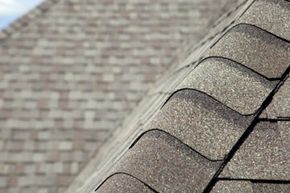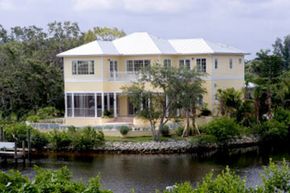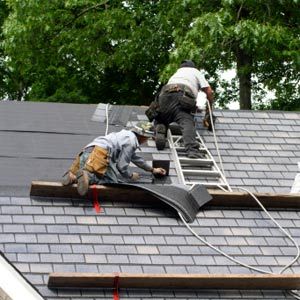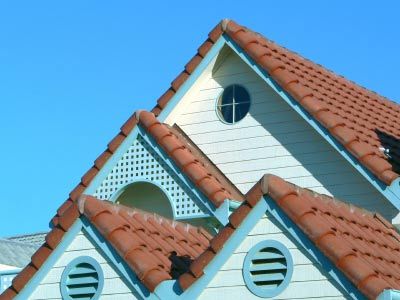If someone dared you to walk across hot asphalt or hot metal -- barefoot -- you'd probably have a hard time deciding which would be worse. Well what if they were talking about climbing up on a tar-shingled or hot-tin roof? It's still a close call. When it comes to which material can keep your home the coolest from the top down, though, one is definitely a hotter pick for keeping cool.
Asphalt shingles are the traditional choice for roofing in North America. In the Southwestern United States and in Florida, as well as Spain, Mexico and Greece, terra cotta and white tile roofing cover much of the housing landscape, but in most parts of the West, shingle roofing made of asphalt and fiberglass is still most common [source: InterNACHI]. These shingles are thin, flat rectangles that cover a roof in layers, with overlap areas to prevent any gaps. Nails and tacky backing secure pieces of shingling onto a roofing surface of plywood covered in roofing felt, or tar paper.
Advertisement
When it comes to metal roofing, we're talking about more than just the corrugated tin roofs that might come to mind. Today's metal roofing is available in various shapes, sizes and textures that resemble traditional roofing materials -- from asphalt to slate to wood -- and it also comes in large, pre-formed panels. Steel, aluminum, copper and even stainless steel roofing systems are available. Installation involves matching the seams of panels and snapping or locking them together. Shaped tiles resembling the rectangular asphalt type are also available.
Both metal and asphalt roofing get the job done when it comes to sheltering a building, but they really part ways when it comes to durability, energy efficiency and cost. Asphalt shingles absorb a lot of heat, and that heat doesn't stop at the roofline; it streams into the structure and increases the indoor temperature by 20 to 25 degrees [source: Florida Solar Energy Center]. Metal roofs, on the other hand, reflect the sun's heat away from a building, leading to energy savings of about 50 percent, and they can be about 100 degrees cooler on the surface than traditional asphalt roofs [source: MRCA]. A shingle roof also weakens and curls over time, making it less of a full-proof barrier for the effects of rain, wind and other environmental forces, and necessitating roof maintenance and earlier replacement. A metal roof doesn't take in all of the heat, it is very resistant to the elements when installed correctly, and it lasts much longer, needing little if any maintenance.
So which roof is more energy efficient in warmer climates? By far, it's metal roofing, but how does it work?
Advertisement



